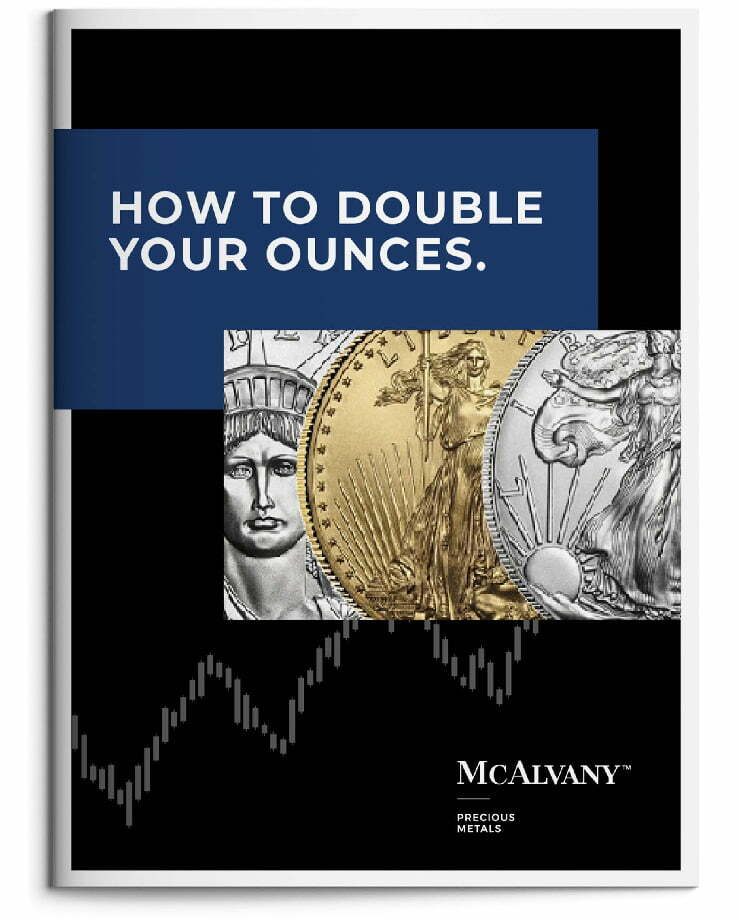The Foothills of Stagflation
Over recent months, HAI has repeatedly suggested that the Trump administration, by national security necessity, looks very likely to pursue policy prerogatives that prioritize addressing our most critical, long-ignored national vulnerabilities. Those critical priorities include the revitalization and reshoring of America’s severely atrophied manufacturing base and a significant reduction in the national debt-to-GDP ratio.
If this administration does indeed seek meaningful progress on both fronts, there are several critical implications for investors. The U.S. dollar is likely to be considerably weakened, the yield curve is likely to be substantially suppressed, and the economy is likely to be run hot. That means Fed rate cuts to lower yields at the short end of the curve (despite inflation well above target), some form of yield curve control on the long end of the curve, while running industrial policy that features highly inflationary money printing to pay for the re-shoring and revitalization of the U.S. manufacturing base as the official sector buys commodities, properties, companies, and assets deemed critical to national security.
This week offered the latest evidence that we are, indeed, very much on that inflationary path. At this week’s Fed FOMC meeting, chairman Powell and the Fed confirmed (with a 25-basis-point cut to the fed funds rate) that they are, in fact, cutting interest rates despite inflation running well above their 2% target for nearly four and a half years now.
Furthermore, as a CNBC headline—“Fed approves quarter-point interest rate cut and sees two more coming this year”—makes clear, this week’s cut wasn’t isolated. It was very likely the start of an extended cutting cycle.
Now, mainstream Western financial media has explained this Fed pivot towards a renewed rate-cutting cycle as a natural response to cooling inflation data paired with a weakening labor market. In HAI‘s view, there’s much more to the story than that. While the labor market may be weakening, both headline and core CPI have started to reaccelerate upward. Moreover, ISM Services prices paid data (a very reliable leading indicator for future CPI inflation) is already suggesting CPI is likely heading well over 4% in the coming months.
On top of that, U.S. tax receipts are currently up 12% year-over-year. That means either the labor market is holding up much better than the current data suggests, or that actual inflation is running much higher than the official CPI reporting. In either case, initiating a rate cutting cycle now would seem curious at best, and dangerously inflationary at worst.
So why is the Fed cutting rates now? In HAI‘s view, it is absolutely the government’s rapidly growing interest expense burden that demands the cuts. In fact, alarmingly—despite attempts to “DOGE” down spending and the increased revenues from tariffs and tax receipts—interest expenses are still sending the deficit up year-over-year.
In short, the U.S. deficit requires much lower interest rates immediately because if the Fed does not cut, it will trigger a debt crisis. On the other hand, while Fed cuts are likely to ease the U.S. fiscal strain, they’re also likely to re-accelerate already rebounding inflation that’s been well above target for nearly four and a half years. As HAI has warned for quite some time, the Fed is in a damned-if-they-do, damned-if-they-don’t pickle, and we are now watching that dilemma unfold in real time.
If we assume that the huge increase in federal tax receipts is the result of much-higher-than-reported inflation rather than a booming economy and labor market (which is what the weak labor market data would tell us), then a 1970s style stagflation (increasing unemployment along with rising inflation) looks like a very real risk—especially as the Fed initiates inflationary rate cuts to ease the government’s fiscal burden.
As Powell himself concluded in his Wednesday comments, “Risks to inflation are tilted to the upside, and risks to employment are tilted to the downside—a challenging situation.” In HAI‘s view, that is a challenging situation indeed, one that sounds an awful lot like the path to stagflation.
Sure enough, this week, following the Fed FOMC meeting, former Treasury Secretary Larry Summers underscored those growing stagflationary concerns. In a New York Times Op-Ed, Summers explained that he fears we’re now set to see both unemployment and inflation rise simultaneously. He warned that, “I think we may be at the foothills of stagflation.”
If so, as HAI suspects, precious metals and hard assets more broadly are at the foothills of their own eventual Everest. That’s because during the last stagflation, unlike today, policymakers had the ability to raise rates from 4% to 16% to crush inflation, defend the dollar, and restore quasi “health” to the dollar system. By contrast, today, the Fed is cutting rates rather than raising them—not because they should, but, in HAI‘s view, because the U.S. fiscal situation absolutely demands it.
Further in HAI‘s view, that reality translates to perhaps the most bullish fundamental set-up for gold yet seen in the freely traded gold era. Considering that most investors remain largely unaware of the true nature of gold’s bullish fundamentals and that Western investors have only just started to enter the sector in recent months, HAI is confident that—volatility and corrections notwithstanding—this bull’s got plenty of upside room to run.
Weekly performance: The S&P 500 was up 1.22%. Gold was up 1.10%, silver gained 2.12%, platinum gained 1.42%, and palladium was down 4.15%. The HUI gold miners index gained 3.28%. The IFRA iShares US Infrastructure ETF was up 0.20%. Energy commodities were volatile and mixed on the week. WTI crude oil gained 0.26%, while natural gas was down 1.34%. The CRB Commodity Index was down 0.90%. Copper was off 0.19%. The Dow Jones US Specialty Real Estate Investment Trust Index was down 1.70%. The Vanguard Utilities ETF was nearly flat, off 0.14%. The dollar index was nearly flat, up 0.12% to close the week at 97.66. The yield on the 10-yr U.S. Treasury was up 6 bps to close the week at 4.13%.
Have a wonderful weekend!
Best Regards,
Morgan Lewis
Investment Strategist & Co-Portfolio Manager
MWM LLC















